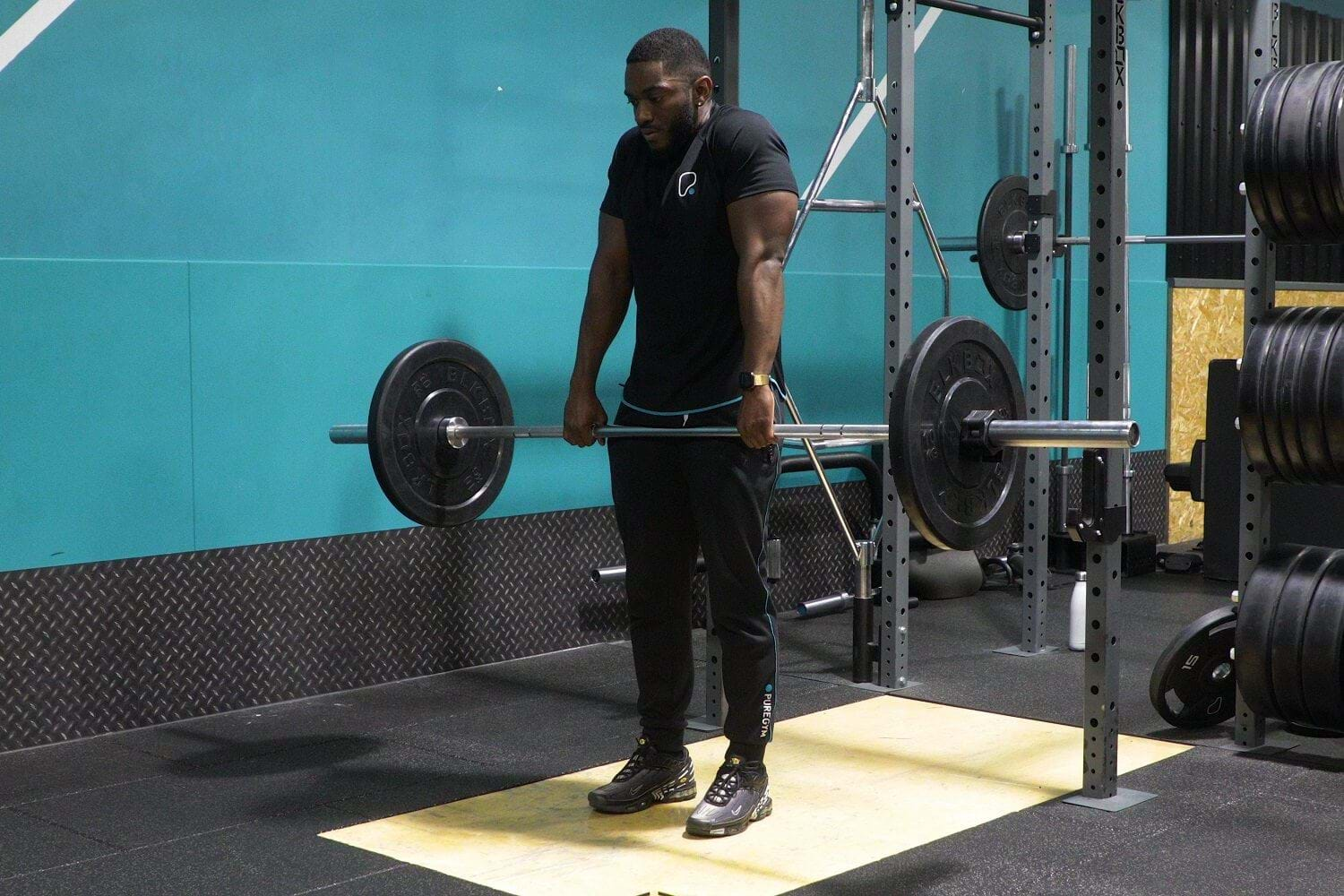Barbell Shrugs
What are Barbell Shrugs?

Barbell shrugs are a variation of the shoulder shrug, an isolation exercise that targets the upper back, predominately the trapezius muscles with the rhomboids also helping to execute the move. The forearms and grip muscles are also worked.
The shrug is a small, controlled lift performed by shrugging the shoulders towards the ears. Barbell shrugs involve holding a barbell in both hands to add resistance to this exercise and challenge the traps.
Compared to dumbbell shrugs, barbell shrugs allow for heavier weights as there is increased stability holding one weight between both hands. This gives the barbell variation more potential for developing upper back strength and size.
Adding barbell shrugs to your back routine will help you get stronger for pulling exercises like rows and deadlifts. They work well with other upper body exercises by targeting a muscle group that supports shoulder stability and function. Try combining barbell shrugs with rows, deadlifts, or overhead presses.
If you're new to barbell shrugs, start with lighter weights to focus on form. Advanced lifters could use lifting straps to shrug heavier weights if they find their grip strength is preventing them from progressing the weights. Check out our form guide and demonstration video below for proper technique.
Check out our other shrug exercises: Dumbbell Shrugs
Commonly Asked Questions About Barbell Shrugs
Barbell shrugs isolate the upper trapezius muscles, which run from the base of the skull to the shoulders and mid-back. They also engage the levator scapulae, which lift the shoulder blades. Barbell shrugs also work the rhomboids and deltoids to a smaller amount, and the forearms and grip muscles get worked as you hold the barbell.
The main difference between dumbbell and barbell shrugs lies is range of motion and weight distribution. Both variations target the trapezius muscles but barbell shrugs allow for heavier loads (especially if you use lifting straps) and can be more effective at building strength and muscle mass, while dumbbell shrugs are better for range of motion, muscular imbalances, and stability.
Barbell shrugs isolate and strengthen the upper traps, helping with neck and shoulder stability while building upper back strength. This can help to prevent injury and lead to better pulling strength in exercises like deadlifts and rows. Well-developed traps make the shoulders look bigger and can give the entire physique an aesthetic look, and can also improve posture. Barbell shrugs also improve grip strength and help strengthen the muscles that support the spine.
Barbell shrugs are technically an isolation exercise due to their primary focus on the trapezius muscles, but some people will refer to them as a limited compound movement because they involve multiple joints, including the shoulder and scapulothoracic joint, and several muscle groups. But they are not a compound exercise in the same way that squats and deadlifts are.
Barbell Shrug Tips
Allow the neck to relax by gently lowering the head and tucking the chin.
Keep your arms straight as you perform the shrug.
Use an overhand grip, palms facing backwards.
Avoid jerking the head and neck during the movement.
How To Do Barbell Shrugs
Set the barbell up on a rack below hip height and load it with plates and clips.
Take hold of the bar with an overhand grip, hands outside your thighs.
Stand up to bring the barbell out of the rack and step backwards so your feet are shoulder width apart.
Engage the core and relax the neck, allowing your head to fall forwards.
Keeping your arms straight, shrug your shoulders towards your ears.
Squeeze the traps before slowly lowering your shoulders back to the start position.
If you’re not sure if any of the above exercises are suitable for you, please consult your doctor before you start it. Need guidance on how to perform the exercise? Ask a personal trainer at your gym.